RAAF W/T
STATION GUNGAHLIN
NORTH OF CANBERRA, ACT
IN AUSTRALIA DURING WWII
![]()
The RAAF constructed a W/T Station on Block No. 182 (approx 79 acres) on Yass Road near Gungahlin in the Australian Capital Territory ACT north of Canberra during WWII. The site was formerly owned by Dr. J. F. Watson, and was acquired by the RAAF on 8 March 1940. It is now part of the suburb of Crace. Dr. Watson held a clearance sale at Gungahlin Homestead on Saturday 6 April 1940 to sell his surplus furniture and plant.
RAAF Station Headquarters Canberra was officially established on 1 April 1940.
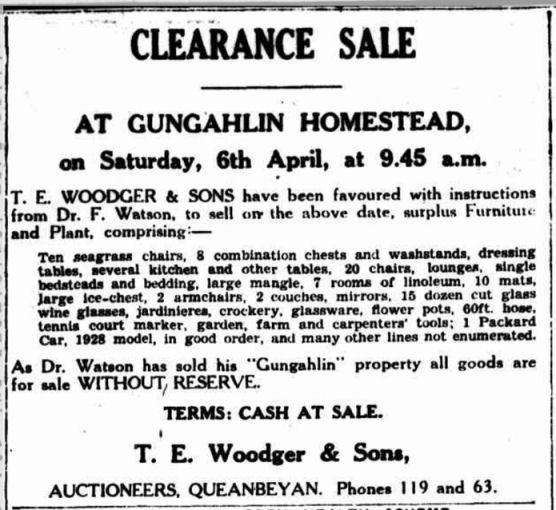
The Canberra Times, ACT Saturday 30 March 1940
Mr. C. Tobiler of Kingston, ACT was awarded a contract for "the erection of a wireless transmission station at Gungahlin, at a cost of £7,377/11/3; and S. Stacey, of Canberra, electric installation at R.A.A.F. station at a cost of £720." It is not clear if the electrical work is at Gungahlin or at the RAAF Station in Canberra, possibly the latter.
Approval was granted in the Commonwealth of Australia Gazette dated 15 August 1940 to close a road that passed through the RAAF Wireless Transmitting Station at Gungahlin.
One source suggests that from its inception and during the Pacific War the site was a Joint Naval and Air Force establishment. The Royal Australian Navy erected an aerial systems at RAAF W/T Station Gungahlin. Can anyone please confirm that the RAN used Gungahlin as a Wireless Transmitter site during WWII or was it only after the war ended?
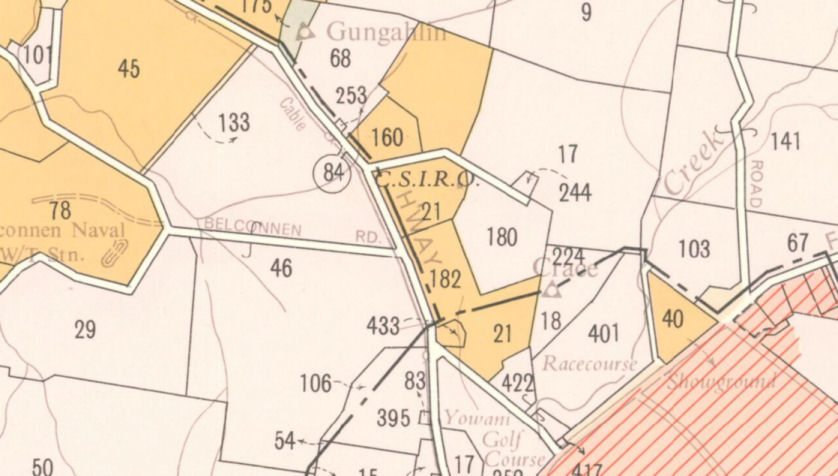
Block 182 can be seen above, located just
below the CSIRO site and east of
the RAN's Belconnen W/T Station and slightly north west of the racecourse
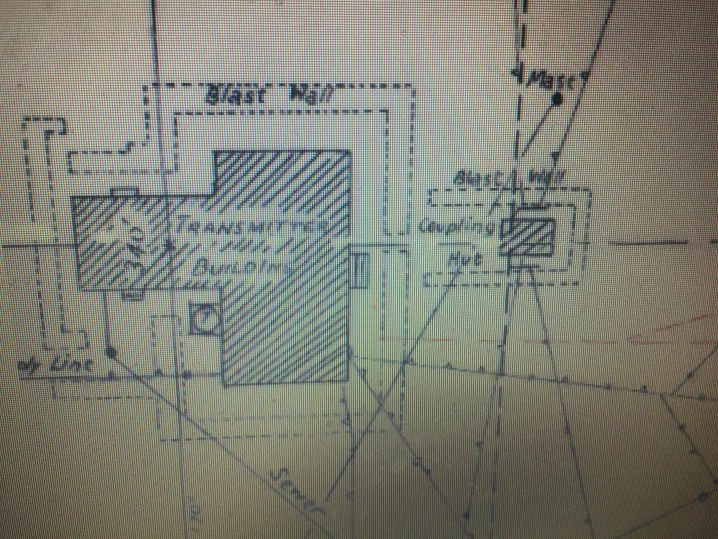
Transmitter Building and Coupling Hut. Note the blast walls.
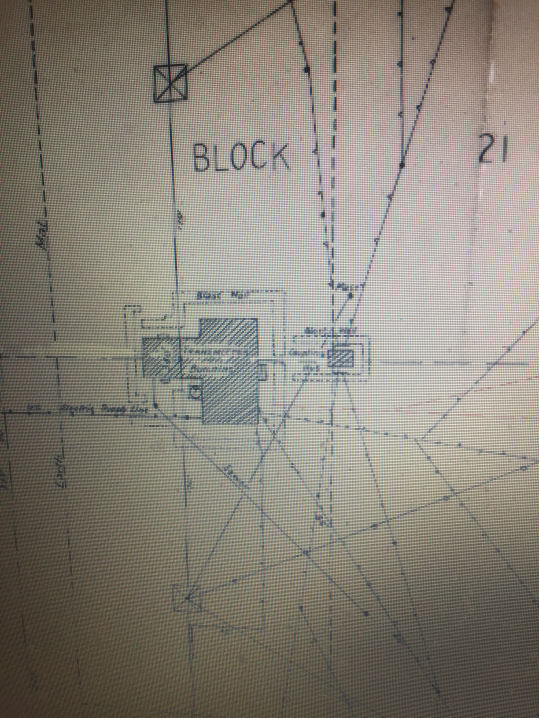
Plan NAA via Rohan Goyne
Transmitter Building and Coupling Hut and some of the aerialarray
There is a plan in a file in National Archives of Australia (see below) dated 1942 for a foundation for a 30kW alternator at RAAF W/T Station - Gungahlin.
The RAAF maintained the National Meteorological Transmitting Station near Gungahlin on behalf of the Meteorological Bureau on the site well after WWII. The RAAF had been regularly broadcasting weather information for the Meteorological Bureau since 1932. Broadcasts were initially sent by hand in Morse Code and later they were sent by automatic Morse Code and Radio Teletype. Later modern equipment was installed using "Facsimile Weather Chart Broadcasts" providing information for both civilian and Service aircraft, shipping. The broadcasts were capable of being received anywhere within "Region Five" of the world's meteorological divisions.
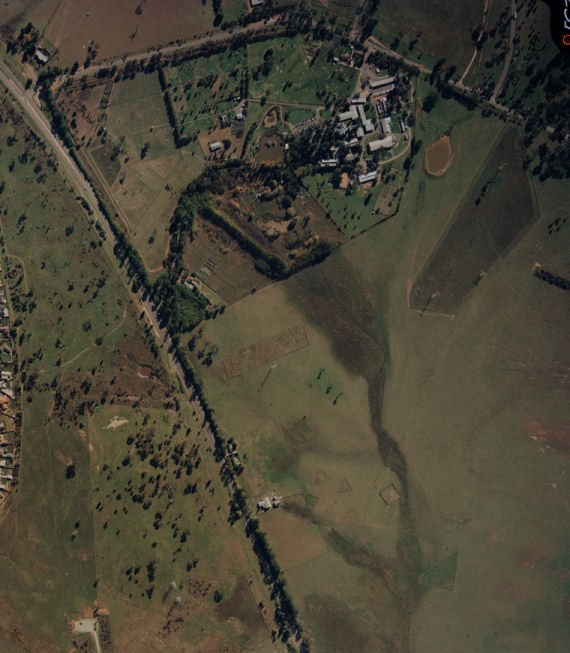
RAAF W/T Station Gungahlin can be seen
towards the bottom of the
photo east of the road. The CSIRO site is at the top of the photo.
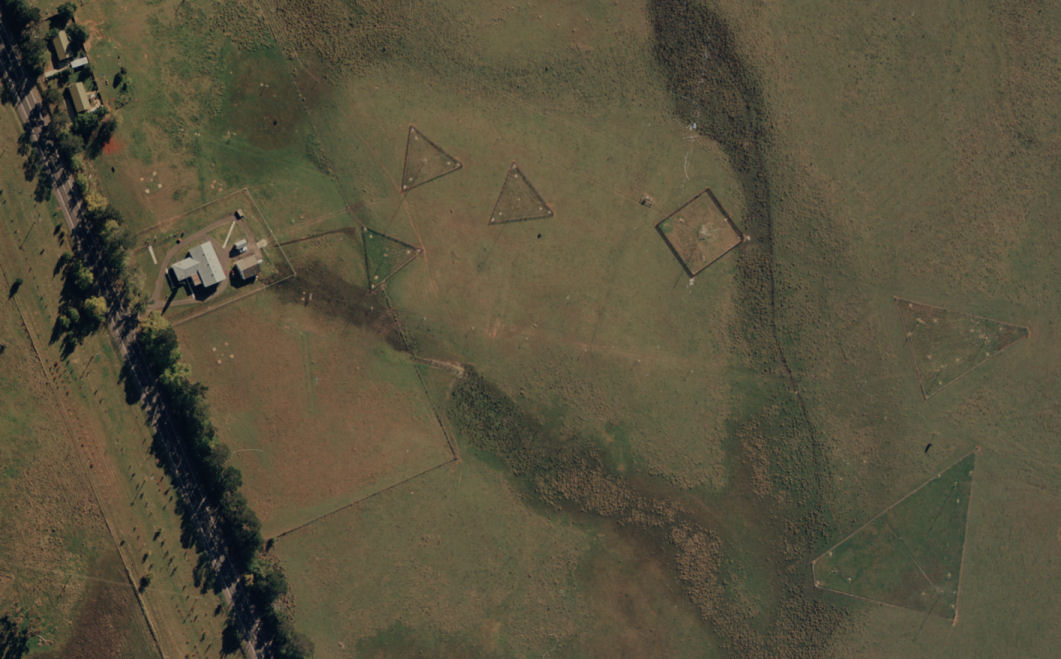
Photo:- Geoscience Australia
The transmitting building, generator
building & coupling hut can be
seen at the left with various antennae arrays located in the paddock
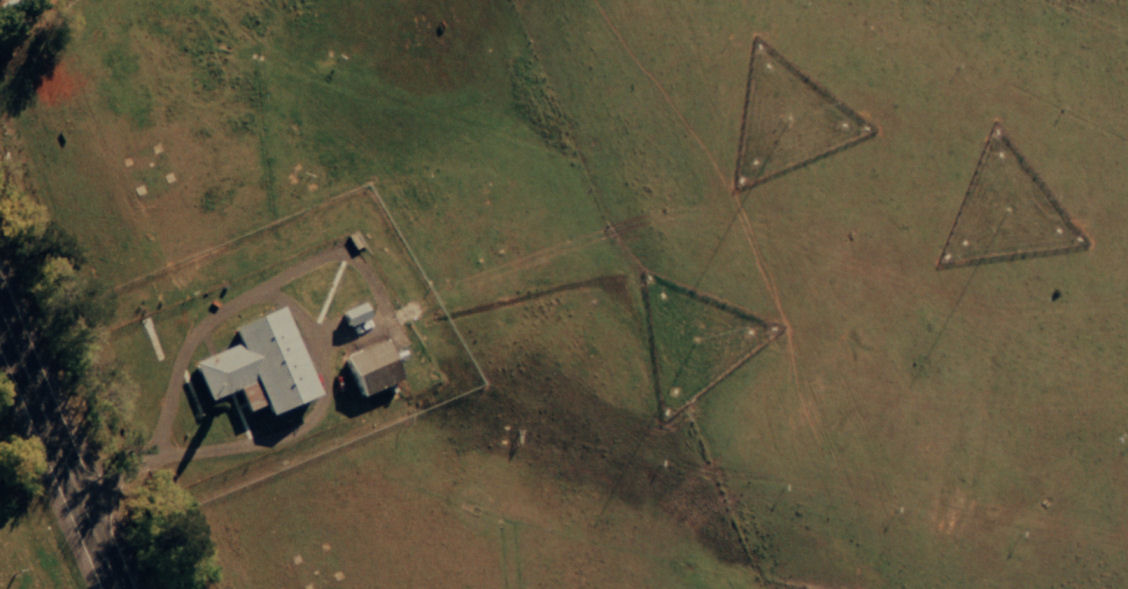
Photo:- Geoscience Australia
Closeup of the transmitting building, generator building & coupling hut and a few of the antennas
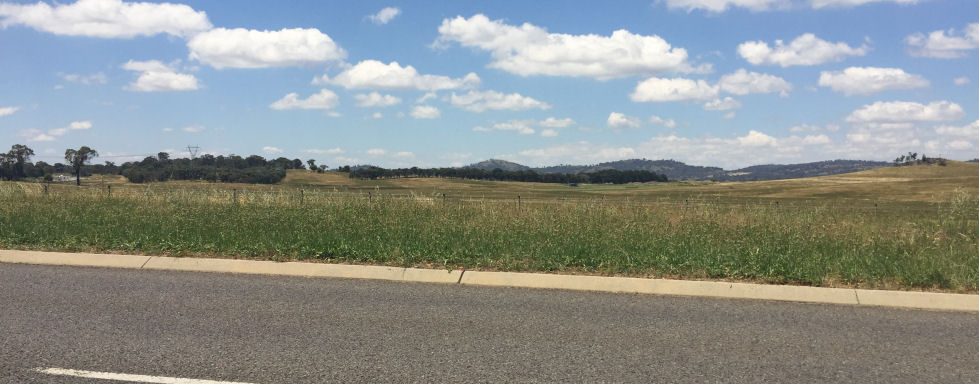
Photo of the Gungahlin site in February 2022 - nothing left to be seen from the road
Rural Land and Property Register for RAAF Wireless Station Gungahlin on Block No. 182.
There is a second shown for RAAF
Wireless Station
Gungahlin on Block No. 153. Not sure where this block is located.
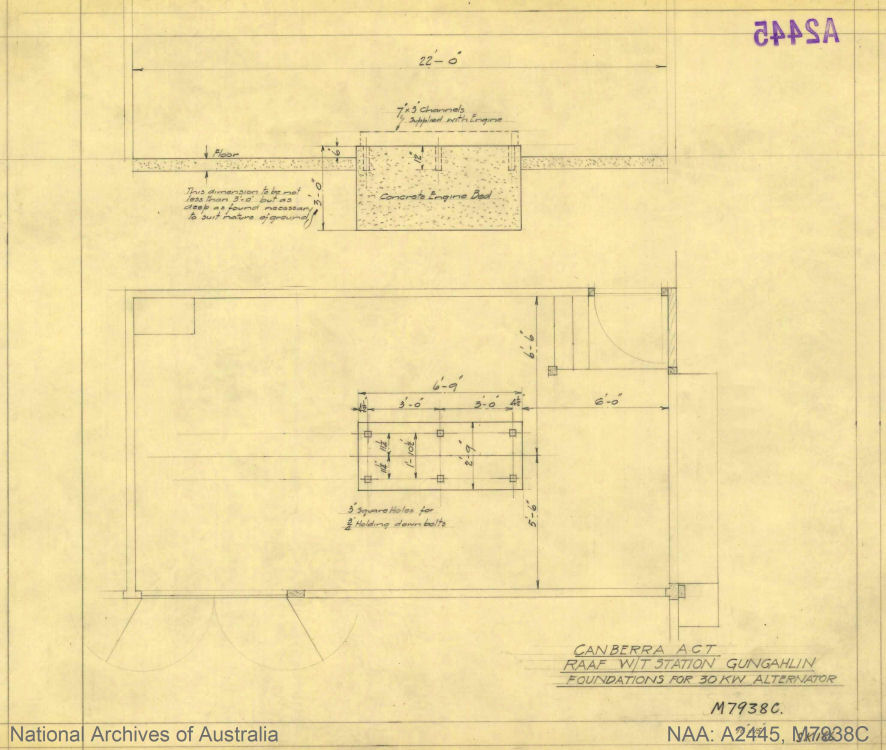
Canberra ACT - RAAF W/T Station - Gungahlin - Foundations for 30kw alternator.
Other files in NAA on Gungahlin are as follows:-
| NAA File Description | Date Range |
| Road within RAAF wireless station area in Gungahlin district | 1940-1940 |
| Contours, Site for Proposed Operations building for RAAF, Gungahlin | 1942-1942 |
| Stand-by power supply to RAAF station, Gungahlin | 1943-1949 |
| Cordeaux, NSW - RAAF Dispersal Aerodrome - (RAAF Wireless Transmitters Station, Block 21, Gungahlin, ACT) | 1946-1946 |
| Cordeaux, NSW - RAAF Dispersal Aerodrome - (RAAF Wireless Transmitters Station, Gungahlin, ACT - Plan | 1946-1946 |
| Naval aerial systems erected at RAAF station Gungahlin | 1946-1948 |
In 1996, Marion Stevens (WRAN Number WR5), donated a chair which she had embroidered with a whole stack of information about HMAS Harmanís wartime activities. This included frequencies, call signs, QRUís, and acknowledgement of the close relationship between the RAN / WRANS and the USN during the War etc. She has also included the names of four stations Ė Pennant Hills, Gungahlin, Belconnen and Molonglo.
Marion Stevens is shown twice in the DVA World War Two Service records. One record shows Marion Stevens enlisting on 28 April 1941 and the other shows her enlisting on 1 October 1942. One record shows her as a Leading Telegraphist being discharged at HMAS Harman on an unspecified date and the other record shows her being discharged as a Second Officer at HMAS Penguin on 30 September 1955.
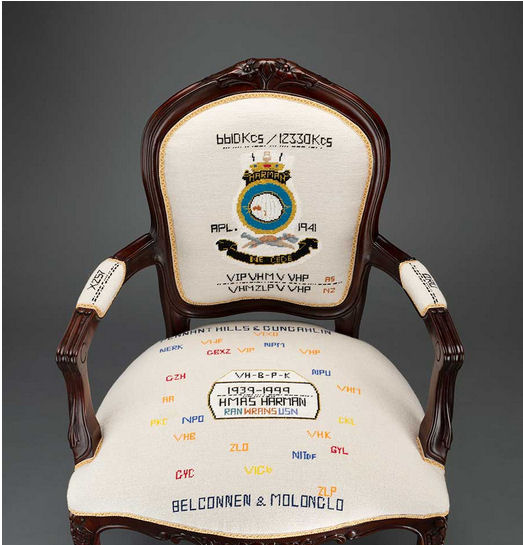
Photo:- via Lynn Gill
In 1996, Marion Stevens (WRAN Number WR5),
donated
a chair which now resides in the Wardroom at HMAS Harman
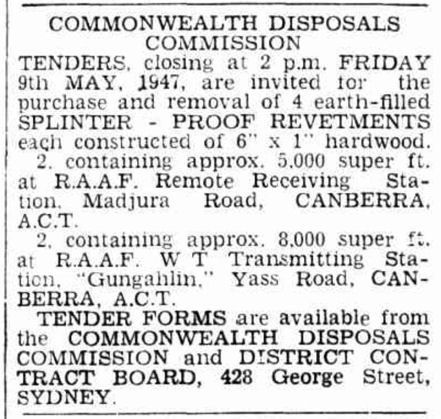
The Blue Mountain Advertiser, Katoomba, FRiday 2 May 1947
The Commonwealth Disposals Commission called tenders which closed at 2 p.m. on Friday 9 May 1947 for the purchase and removal of two earth filled Splinter-Proof Revetments at RAAF W/T Transmitting Station Gungahlin at Yass Road, Canberra. They were constructed of 6" by 1" hardwood. The tender also called for the purchase and removal of two earth filled Splinter-Proof Revetments at the RAAF Remote Receiving Station at Madjura Road, Canberra.
Does anyone have any
information or photos of the
RAAF Remote Receiving Station at Madjura Road, Canberra?
ACKNOWLEDGEMENTS
I'd like to thank Daryll Fell, Ian Pfennigwerth, Allan Moffatt, Brian "Dolly" Gray OAM, Lynn Gill and Rohan Goyne for their assistance with this web page.
Can anyone help me with more information?
"Australia @ War" WWII Research Products
|
© Peter Dunn 2015 |
Please
e-mail me |
This page first produced 23 March 2022
This page last updated 01 April 2022